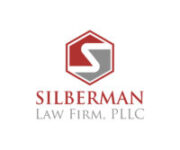
When it comes to dog bite liability in Texas, the state follows what is commonly known as the "one bite rule." This rule and other factors determine when a dog owner is held responsible for their pet's aggressive behavior. Let's delve into the specifics of this rule and how liability is established.
The One Bite Rule
The "one bite rule" essentially means that a dog owner can be held liable for a bite if they knew or should have known about their dog's aggressive tendencies. This awareness can stem from the dog having bitten someone in the past or displaying behaviors that indicate a propensity to bite.
- Previous Bites: If a dog has bitten someone before, the owner is on notice that their dog may bite again. In such cases, the owner is likely to be held liable for any subsequent bites if they do not take reasonable steps to prevent it.
- Aggressive Tendencies: Even without a prior bite, if a dog shows aggressive behavior (growling, snapping, etc.), the owner should be aware of the risk and act accordingly to prevent harm.
Breed-Specific Liability
Certain breeds, such as pit bulls and Rottweilers, are often perceived as inherently aggressive. In Texas, this perception can influence liability. Courts may bypass the one bite rule if the breed in question is known for aggressive behavior, holding the owner liable for the first bite itself. This is particularly true if the dog belongs to a breed that judges commonly recognize as dangerous.
Comparative Negligence
Texas Civil Practice and Remedies Code § 33.001 covers the comparative negligence rule, indicating how liability is apportioned based on fault. In Texas, if the injured party is found to be more than 51% responsible for the incident, they cannot recover damages. This rule ensures that liability is fairly distributed based on the circumstances leading to the bite.
Texas may apply the doctrine of comparative negligence in dog bite cases. This means that if the victim's actions contributed to the incident, their compensation could be reduced. For instance, if someone approached a dog belonging to a breed with aggressive tendencies without caution and got bitten, they might share some liability for their injury.
Imagine a scenario where an individual quickly approaches two dogs on leashes, including a pit bull and Rottweiler, and tries to pet them at once without knowing their temperament. If they get bitten, the court might consider their actions as negligent, thereby reducing or even negating the owner's liability under comparative negligence.
Premises Liability
Dog bite cases often fall within the legal framework of premises liability. If a dog bite occurs on the owner's property, the owner may be held liable. Property owners have a duty to ensure their premises are safe for visitors. If an owner fails to take reasonable measures to secure a known aggressive dog, they could be liable for injuries sustained by visitors. Landlords may also face some liability associated with dogs belonging to tenants if the landlord has engaged in negligent behavior associated with leasing the property to the tenant.
Conclusion
Understanding dog bite liability in Texas requires awareness of the one bite rule, breed-specific considerations, and the doctrine of comparative negligence. Dog owners must take proactive measures to prevent their pets from harming others, especially if they have shown signs of aggression. On the other hand, individuals should exercise caution around unfamiliar dogs to avoid contributing to potential incidents.
All information provided on Silblawfirm.com (hereinafter "website") is provided for informational purposes only, and is not intended to be used for legal advice. Users of this website should not take any actions or refrain from taking any actions based upon content or information on this website. Users of this site should contact a licensed Texas attorney for a full and complete review of their legal issues.
